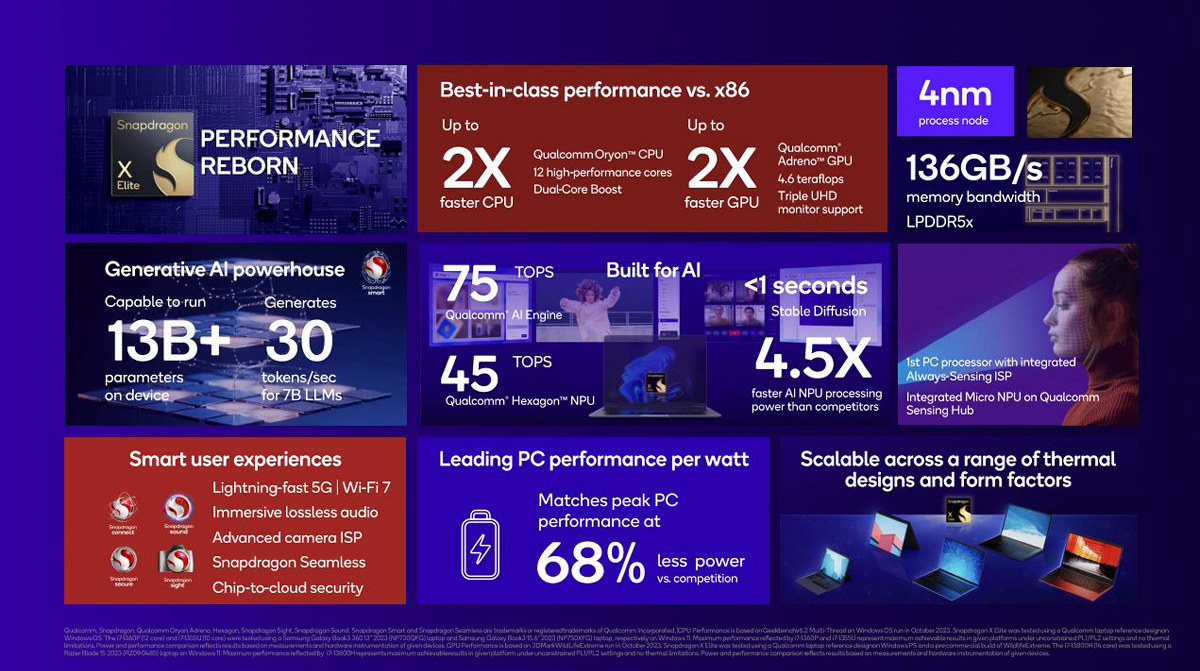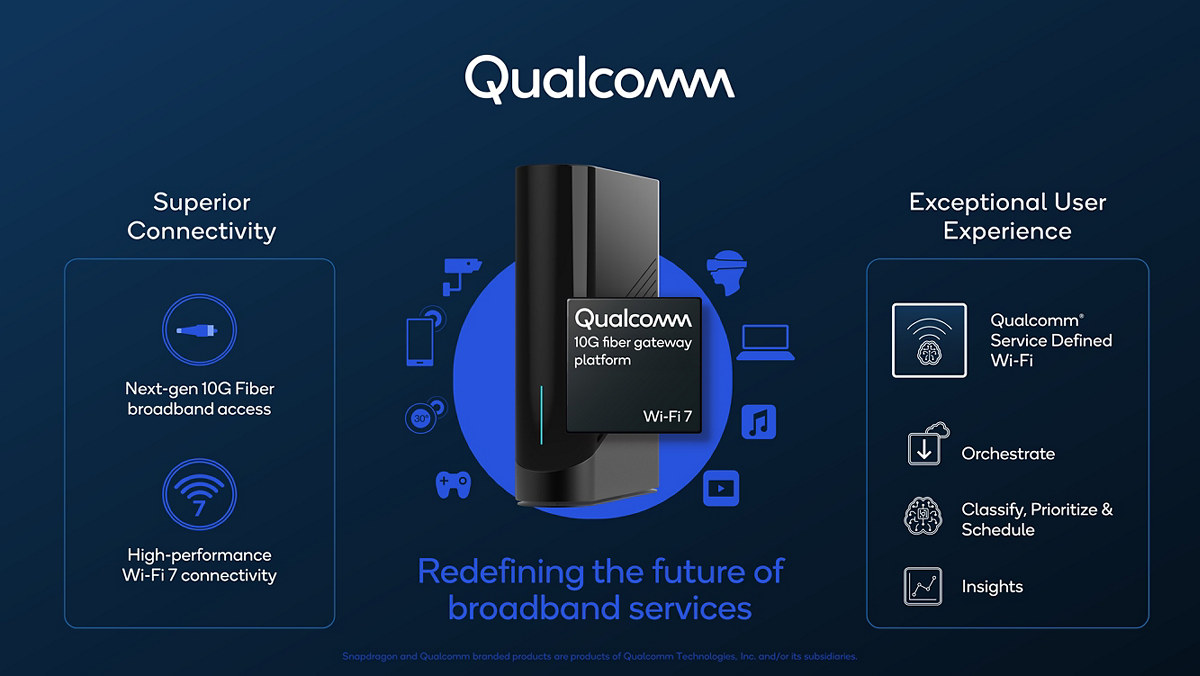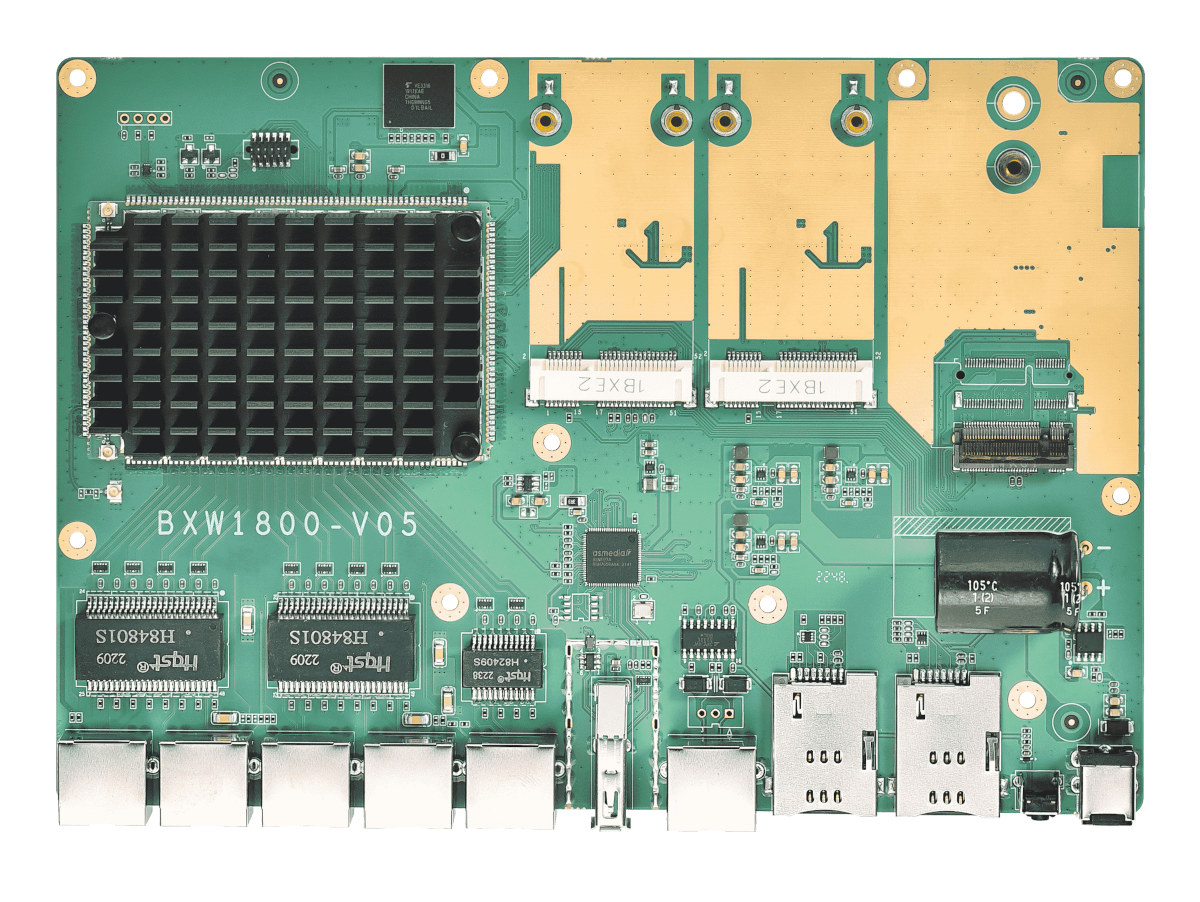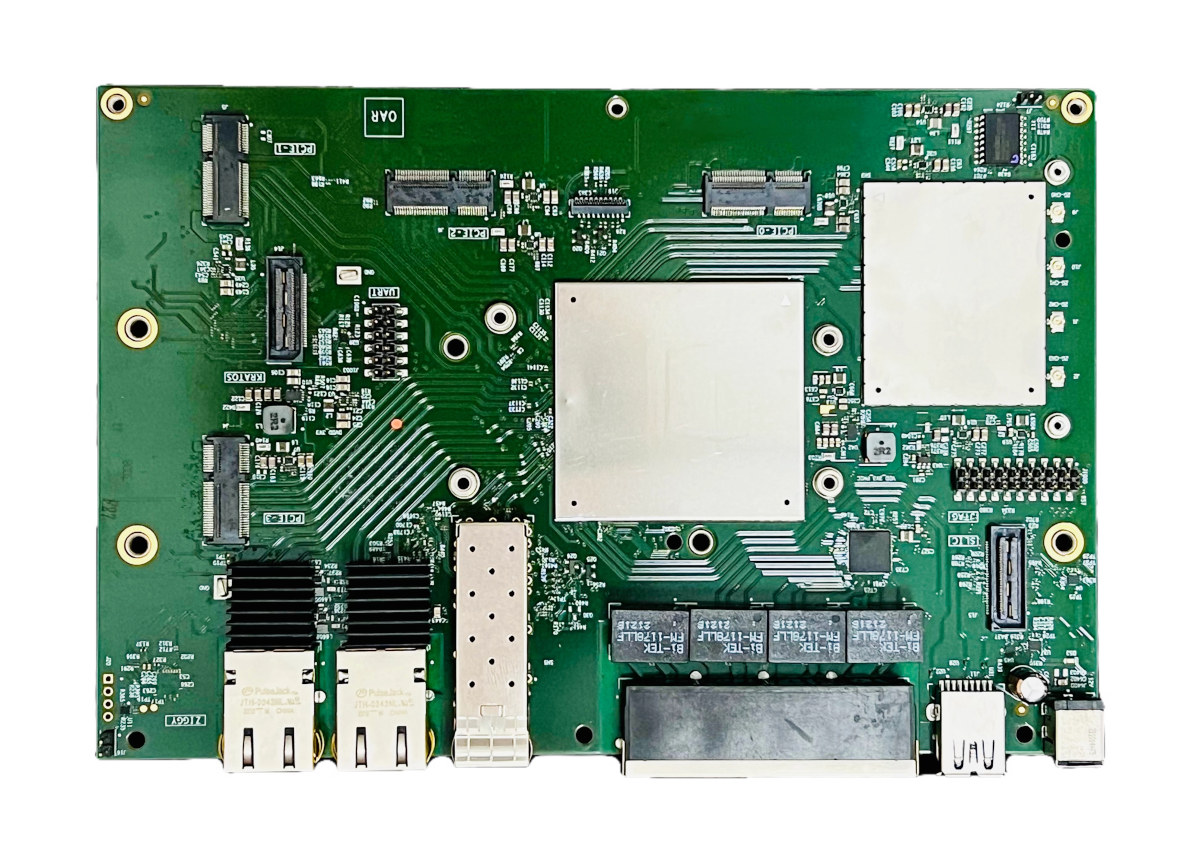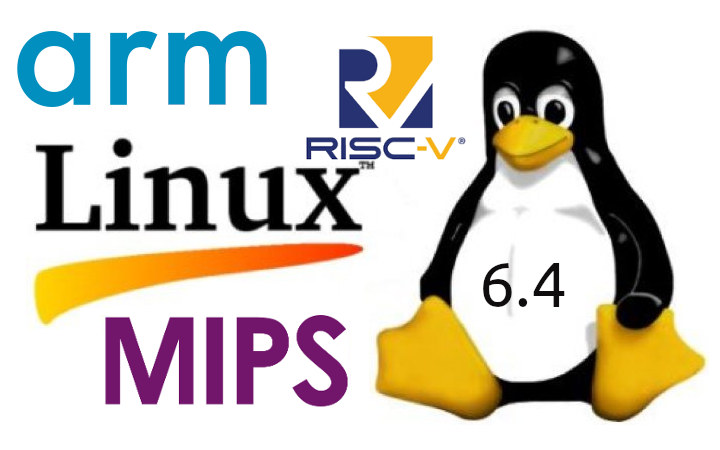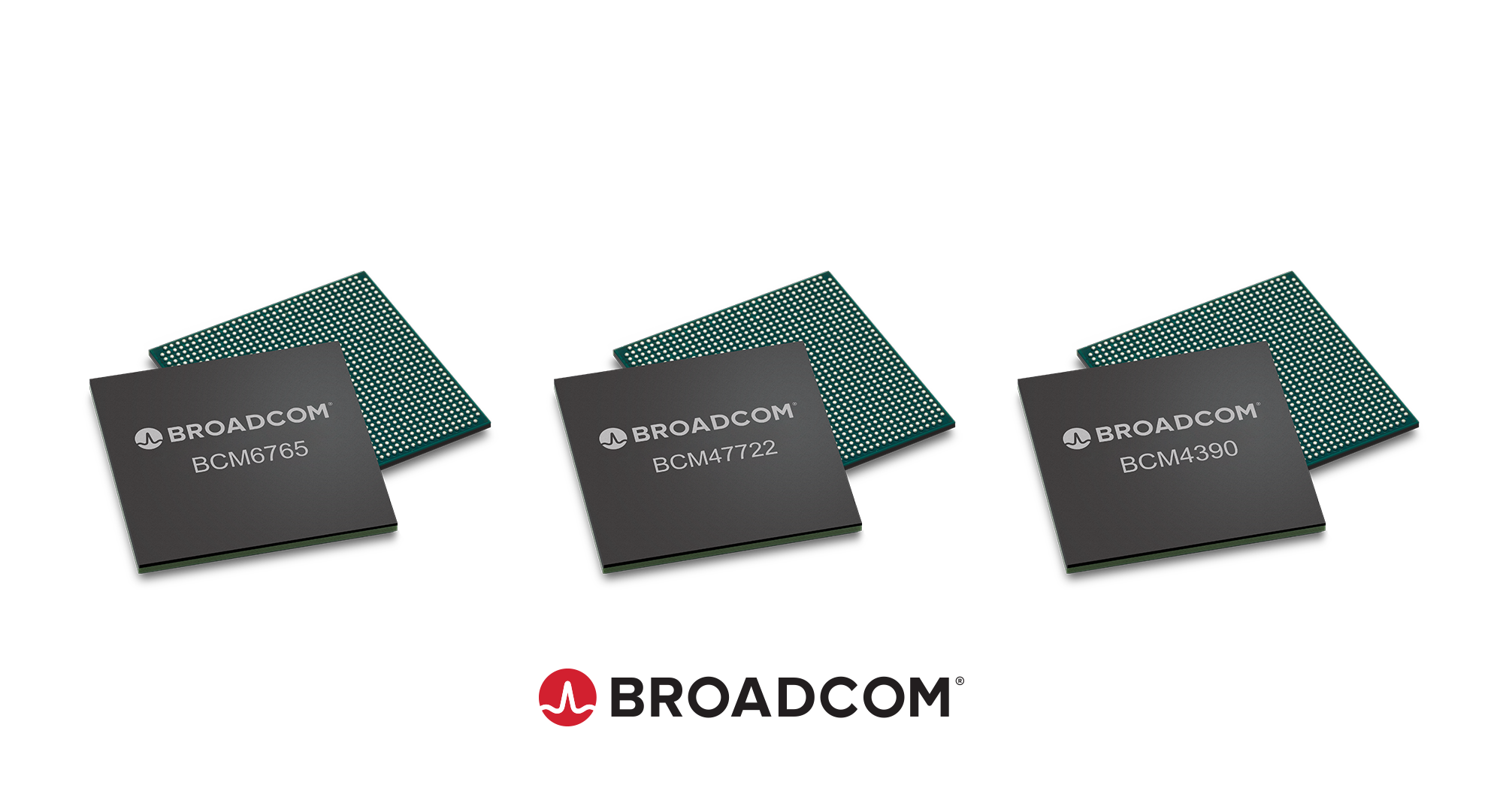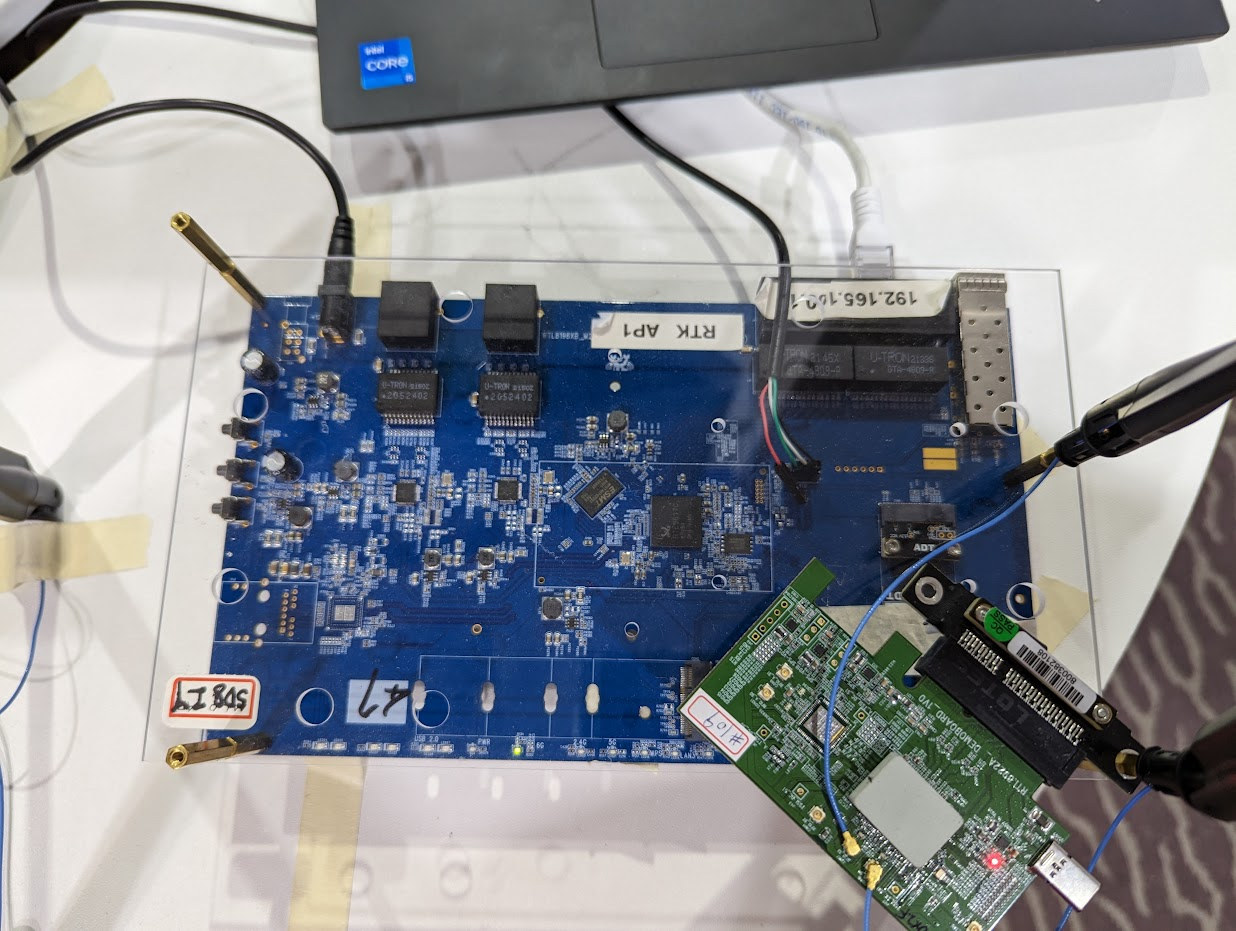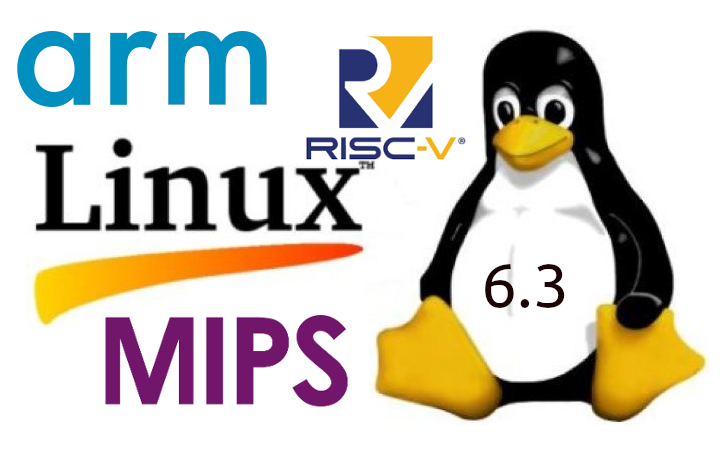Qualcomm has now provided Arm chips for mobile PCs (aka laptops) for several years, but apart from a 20-hour battery life, the performance and price of Snapdragon laptops have often been disappointing. The Snapdragon X Elite aims to change that at least on the performance front. The new Qualcomm 12-core 64-bit Arm processor is clocked at up to 3.8 GHz boosting to up to 4.3 GHz, and is said to deliver up to twice the CPU performance against the competition (Intel/AMD/Apple) or provides the same level of performance at a third of the power consumption. The SoC will also be able to run on-device generative AI with over 13B parameters thanks to 75 TOPS of AI performance and support the latest wireless connectivity technologies such as 5G and WiFi 7 through external chips from the company. Qualcomm Snapdragon X Elite specifications: CPU – 12-core 64-bit Armv8 Oryon processor clocked at […]
Qualcomm 10G Fiber Gateway Platform supports Wi-Fi 7 and “Service Defined Wi-Fi technology”
Qualcomm 10G Fiber Gateway Platform combines 10G Passive Optical Network (PON) technology with Wi-Fi 7 connectivity to deliver 10 Gbps Internet speed to the home. The platform also supports “Service Defined Wi-Fi technology” to enable cloud-to-device quality of service. It seems it was only a few years ago that we talked about 1 Gbps broadband Internet speed, but some companies like Sonic already offer 10 Gbps fiber optic internet to residential customers in the US. That means we’ll need powerful CPEs to deliver 10 Gbps speed to the home and distribute them through the home through multi-gigabit Ethernet and/or WiFi 7, and Qualcomm 10G Fiber Gateway Platform aims to address this market. Qualcomm 10G Fiber Gateway Platform specifications: CPU – Unnamed quad-core processor Passive Optical Network Deployment types: XGS-PON Residential Gateway (HGS/ONT), XGS-PON SFU ONU, XGS-PON SFU+ ONU Peak Downstream Rate: 10 Gbps Peak Upstream Rate: 10 Gbps Wi-Fi Peak […]
bitswrt NHX53X2 WiFi 7 system-on-module features Qualcomm IPQ5332 SoC
bitswrt NHX53X2 is a WiFi 7 system-on-module (SoC) powered by a Qualcomm IPQ5332 quad-core Cortex-A53 SoC and equipped with the QCN6274 commercial grade WiFi 7 chipset. The IPQ5332 processor looks to be the little brother of the IPQ9574 quad-core Arm Cortex-A73 processor found in the AL02 WiFi 7 reference router board from Qualcomm. The module comes with up to 3GB RAM, 1GB NAND flash, and exposes plenty of I/Os with multiple 2.5GbE interfaces, 10GbE, PCIe Gen 3.0, USB 3.0, GPIOs, and more. bitswrt NHX53X2-V01 specifications: SoC – Qualcomm IPQ5332 quad-core Arm Cortex-A53 at 1.5 GHz WiFi 7 chipset – Qualcomm QCN6274 NPU – 12-threaded network processing unit (NPU) Ubi32 @ 1.5 GHz (likely part of Qualcomm IPQ5332, but public info is sparse) System Memory – 1GB (option up to 3GB) 16/32-bit DDR4 at 2133 MT/s Storage – 8MB NOR flash, 128MB (option up to 1GB) NAND flash, 128Kbit EEPROM WLAN […]
Qualcomm IPQ9574 “AL02” router board support WiFi 7 modules, 10GbE networking
The recent Linux 6.4 release included initial support for the AL02 WiFi 7 router board powered by a Qualcomm IPQ9574 quad-core Cortex-A73 processor part of the Qualcomm Networking Pro 1620 platform with the board featuring 2GB DDR4 RAM and 256MB NAND flash. A couple of weeks ago, I was contacted by Wallystech about their DR9574 WiFi 7 board based on the IPQ9574 processor, but I ended up not writing about it due to the lack of information and low-quality photos. But it turns out it’s actually the Qualcomm AL02 reference board that’s also provided by Compex. Both companies are world-leading in the sense they offer low-quality and blurry pictures in a way that’s unmatched in the industry, but we do have some specifications, so let’s have a closer look. AL02 / DR9574 board specifications: SoC – Qualcomm IPQ9574 quad-core Arm Cortex-A73 processor @ 2.2GHz processor System Memory – 2GB DDR4 […]
Linux 6.4 release – Main changes, Arm, RISC-V and MIPS architectures
Linux 6.4 has just been released by Linus Torvalds on the Linux Kernel Mailing List (LKML): Hmm. Final week of 6.4 is done, and we’ve mainly got some netfilter fixes, some mm reverts, and a few tracing updates. There’s random small changes elsewhere: the usual architecture noise, a number of selftest updates, some filesystem fixes (btrfs, ksmb), etc. Most of the stuff in my mailbox the last week has been about upcoming things for 6.5, and I already have 15 pull requests pending. I appreciate all you proactive people. But that’s for tomorrow. Today we’re all busy build-testing the newest kernel release, and checking that it’s all good. Right? Released around two months ago, Linux 6.3 brought us AMD’s “automatic IBRS” Spectre defense mechanism, additional progress on the Rust front with User-mode Linux support (on x86-64 systems only), the NFS filesystem (both the client and server sides) gained support for […]
Broadcom unveils 2nd generation WiFi 7 chipsets: BCM6765, BCM47722, BCM4390
Broadcom has announced its second generation WiFi 7 chipsets: the BCM6765 residential WiFi 7 access point chip, the BCM47722 enterprise WiFi 7 access point chip with dual IoT radios that support simultaneous operation for Bluetooth Low Energy (BLE), Zigbee, Thread, and Matter protocols, and the BCM4390 low-power Wi-Fi 7, Bluetooth, and 802.15.4 combo chip designed for use in mobile devices. This follows the introduction of Broadcom’s first WiFi 7 chipsets in April 2022 with residential and enterprise WiFi 7 access point chips, and a WiFi 7 client chip, but the second generation access point chipsets support 320 MHz 2-stream Wi-Fi operation and add extra features, and the BCM4390 optimized costs bringing WiFi 7 to lower-prices phones and devices. BCM6765 residential Wi-Fi access point chip highlights: CPU – Quad-core ARMv8 CPU with 10Gbps Ethernet PHY WiFi 7 Dual 2×2 tri-band (2.4, 5, and 6 GHz) capable radios that support simultaneous operation […]
Realtek WiFi 7 and WiFi 6 roadmap for routers and clients
We’ve just written about Realtek 5 Gbps Ethernet chips, but the company also has some roadmaps for WiFi 6 and WiFi 7 router chips, and a WiFi 7 client module demonstrated at COMPUTEX 2023. The company’s roadmap include five WiFi 7 router solutions: WiFi 7 BE6500 router with a Realtek 8198DS dual Arm core processor @ 1.2 GHz with an RTL8952AR 2×2 MIMO 5 GHz and 6 GHz chip, RTL8902A 2×2 2.4 GHz chip, and an RTL8221B 2.5GbE PHY WiFi 7 BE9400 router with a Realtek 8198DS dual Arm core processor @ 1.2 GHz with an RTL8952AR 2×2 MIMO 5 GHz chip, RTL8902A 2×2 2.4 GHz chip, an RTL8934AR 4×4 MIMO 6 GHz chip, and an RTL8221B 2.5GbE PHY WiFi 7 BE3400 router with a Realtek 8198DS dual Arm core processor @ 1.2 GHz with an RTL8952AR 2×2 MIMO 5 GHz chip, and an RTL8221B 2.5GbE PHY WiFi 7 BE6400 […]
Linux 6.3 release – Notable changes, Arm, RISC-V and MIPS architectures
Linux Torvalds has just announced the release of Linux 6.3 on the Linux Kernel Mailing List (LKML): It’s been a calm release this time around, and the last week was really no different. So here we are, right on schedule, with the 6.3 release out and ready for your enjoyment. That doesn’t mean that something nasty couldn’t have been lurking all these weeks, of course, but let’s just take things at face value and hope it all means that everything is fine, and it really was a nice controlled release cycle. It happens. This also obviously means the merge window for 6.4 will open tomorrow. I already have two dozen pull requests waiting for me to start doing my pulls, and I appreciate it. I expect I’ll have even more when I wake up tomorrow. But in the meantime, let’s enjoy (and test) the 6.3 release. As always, the shortlog […]


